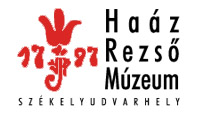Kovács Petronella (szerk.): Isis - Erdélyi magyar restaurátor füzetek 17. (Székelyudvarhely, 2017)
Domokos Levente - László Károly: A berethalmi evangélikus templom sekrestyéjében álló kandalló restaurálása
Abstracts Zoltán Miklós Rich Past - Hopeful Future The mission of the Haáz Rezső Museum is to collect, research and exhibit material related to the history and intellectual legacy of the region around Odorhei. Ideally the museum was to have a positive influence on the community, but for quite some time it was hampered in its mission. The building, which housed the museum, was inadequate, and there were limitations in personnel and in infrastructure. In addition, because the building was in constant need of repair, the staff" was not able to concentrate on professional work. After the change of government in 1990, the building was returned to the original owners, from whom the building was confiscated during the 1950s. After that the museum barely managed to survive - there was no way it could carry out its mission successfully. While the local government was aware of the problems at the museum, finding a solution was not a priority. Because there was a constant threat that the owners would terminate the agreement to house the museum, there was a need to develop a plan to raise awareness of the museum’s significance to the city and to the region, and to encourage the citizens to make greater use of its resources. Around 2010 the museum administration decided to strengthen the social role of the museum, serving the community and increasing personal services, with emphasis on cultural and educational activities. As one of the main cultural institutions of the region, the museum sought to be more appealing to tourists and to residents as well. In recent years, the health of the museum has improved significantly. In 2012, the local government acquired the Haberstumpf Villa to become the new home of the Haáz Rezső Museum. After several years of design, planning, and restoration, the museum opened its doors in its new home on May 17, 2016. Dr. Zoltán Miklós Ethnographer, museum director Translated by: Anna-Mária Jakab Magdolna Békési-Gardánfalvi - Tamás Hofmann - Sándor Fehér Possibility of application of energy-dispersive X-ray spectroscopy (SEM-EDX) analysis for examination of threads and dyes of archaeological textiles The study introduces a part of an ongoing doctoral research about the methods of dye analysis of museum textiles. When restoring museum textiles, the question is often whether the current colour of the subject is the same as its original appearance had been. As a result of time spent in the soil, inadequate storage conditions, usage and previous interventions, finding the original colour of the fabric is often difficult even for professionals. Archaeological textiles are among our shortest-lived material relics; usually they survive in the form of smaller or larger fragments. The deterioration of the above materials are determined by the physical, chemical and biological processes taking place between the objects and their environment, as a result of which the fibre material carrying the colour is also strongly degraded. Archaeological textiles are usually brownish upon arrival at the conservation workshop. In such cases, to determine their original appearance is almost impossible without identifying the dye. The dye and colour of the textile can carry important information on the technique, origin and age of the object, as well as help with restoration and conservation. For the reconstruction of objects and finds of high importance, it is indispensable to define their original colour. To determine and reconstruct the colour more precisely, besides the identification of the organic dye, the determination of inorganic components is also important since most of the natural dyes are used as mordant dyes. Archaeological textiles generally remain in the form of smaller or larger fragments, so the amount of sample available is often very small. Another problem is that not only the textile but some of the dye may be degraded, so chromatographic and mass spectrometry methods that are sensitive to the separation, and detection of dyes with a low detection limit are most suitable. In Hungary, these studies have hardly been performed in recent decades. Authors were trying to find out how successful the use of energy-dispersive X-ray spectroscopy (SEM-EDX) can be for the identification of the type of threads and the inorganic compounds present in archaeological textile samples of different ages. In the course of the work examination of fibres was carried out with scanning electron microscope on 30 standard samples and on 21 archaeological samples. This type of analytical method can be used with good efficiency for fragile, decayed and very contaminated fibre, the identification of which is very difficult or is already impossible by the use of stereomicroscope or polarising microscope. The advantage of the procedure is that EDX connected to the scanning electron microscope also provides information on the elemental composition of the sample. When evaluating the results many things have to be taken into account to interpret correctly the data received. For example, the presence of copper could be deduced from the use of copper sulphate in the course of dying, but if the garment is heavily decorated with metal threads copper as a silver alloy may also appear in the result. 178
